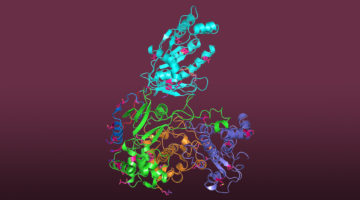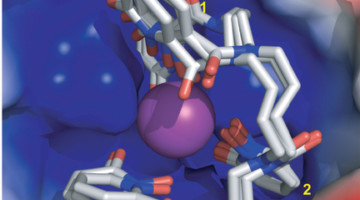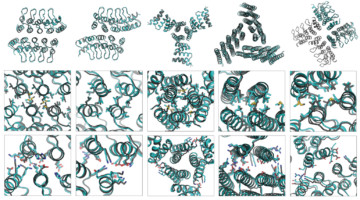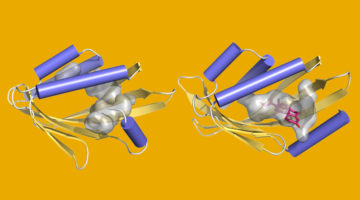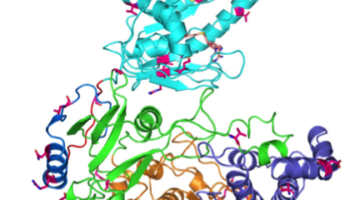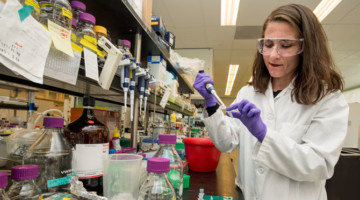Bacterial microcompartments (BMCs) are hollow protein shells that encapsulate enzymes involved in bacterial metabolism. Crystallography studies have provided atomic-resolution views of a fully assembled BMC, revealing basic principles of shell construction for fighting pathogens or bioengineering applications. Read more »![]()
![]()
Structure of a Key Protein from the Zika Virus
The Zika virus (ZIKV) is a mosquito-borne pathogen recently linked to birth defects in infants. At the ALS, researchers have resolved the structure of a key ZIKV protein to 3.0 Å, an important step toward the rational design of drugs capable of disrupting viral functions and halting the spread of the disease. Read more »![]()
![]()
Protein Complex Shows Promise for Berkelium Separation
Scientists found that the element berkelium breaks form with its heavy-element peers by taking on an extra positive charge when bound to a synthetic organic molecule. This property could help scientists develop better methods for handling and purifying nuclear materials. Read more »
A Systematic Approach to Customizing Cyclic Proteins
Proteins consisting of identical subunits arranged symmetrically around a central axis (cyclic homo-oligomers) play key roles in many biological processes. Researchers have now developed a systematic approach to their design and demonstrated its accuracy using protein crystallography and small-angle x-ray scattering. Read more »
Bending the (β-Sheet) Curve to Shape Protein Cavities
Curved β sheets are basic building blocks of many protein cavities that, by serving as binding sites for other molecules, are essential to protein function. β-sheet curvature can now be controlled with atomic-level accuracy, opening the door to custom-designed sites capable of entirely new functions. Read more »![]()
![]()
Researchers Gain Insight into Protein Critical to Zika Virus Reproduction
Zika virus is a mosquito-borne infectious disease linked to certain birth defects in infants. Scientists have mapped a key viral protein called NS5, which contains two enzymes: one reduces the body’s ability to mount an immune response against infection and the other helps start the genetic replication process. Read more »
How Berkelium Stands Out in a Heavy Metal Crowd
Using several spectroscopic techniques, scientists found that the element berkelium breaks form with its heavy-element peers by taking on an extra positive charge when bound to a synthetic organic molecule. This property could help scientists develop better methods for handling and purifying nuclear materials. Read more »
Could This Enzyme Help Turn Biofuel Waste into Something Useful?
A protein used by common soil bacteria is providing new clues in the effort to convert aryl compounds, a common waste product from industrial and agricultural practices, into something of value. This Joint BioEnergy Institute (JBEI) study, which involved ALS Beamline 8.2.2, targets LigM for its role in breaking down aromatic pollutants. Read more »
NCAA Drives Formation of Designed Proteins
A noncanonical amino-acid (NCAA) complex has been found to drive the self-assembly of a computationally designed protein. Bpy-ala, which is “noncanonical” because it’s not among the 20 amino acids that occur naturally, has useful properties that could be used to generate novel photoactive proteins. Read more »
Self-Assembly of a Programmable DNA Lattice
The use of DNA for nanotechnology has gained interest because it is a highly “programmable” polymer with “sticky ends,” allowing the self-assembly of molecular scaffolds for other proteins and molecules. Their high-resolution structures will help map new routes toward the rational design of self-assembling 3D DNA crystals. Read more »
- « Previous Page
- 1
- …
- 5
- 6
- 7
- 8
- 9
- 10
- Next Page »

